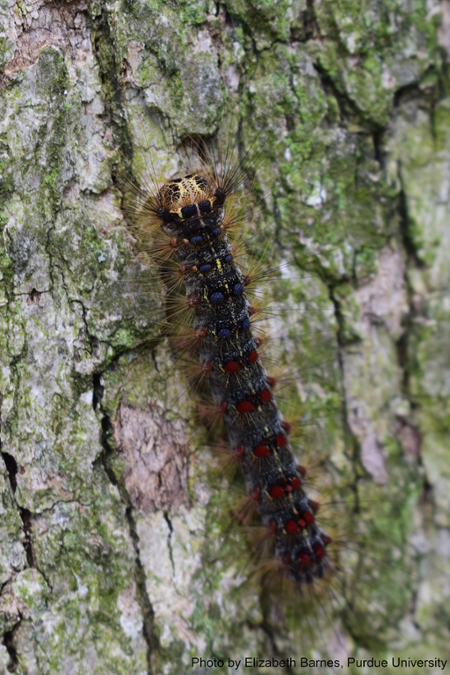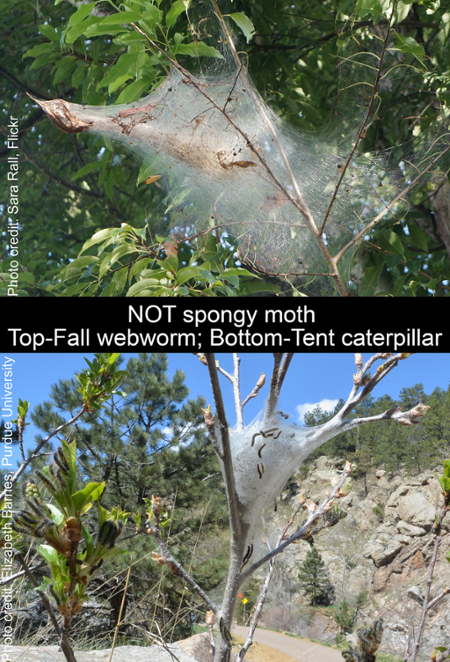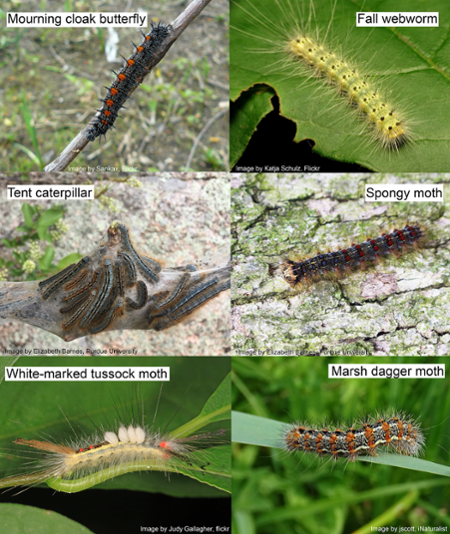Identification
Spongy moths are easiest to identify in the caterpillar and egg stages. Adult moths and pupae are easily mistaken for native butterflies and moths. If you are trying to manage a spongy moth, we suggest focusing on the caterpillar and egg stages to minimize the risk of killing the wrong insect.
Spongy moth caterpillars have a blue-black, hairy body with pairs of blue and red bumps down their back. When first hatched from their eggs, caterpillars can be as small as less than 0.25 inches but can grow to 1.5 to 2 inches long. Their hair can irritate some people’s skin, so avoid touching them or, if necessary, handle them with gloves.
Several kinds of caterpillars look similar to spongy moth:
- Mourning cloak caterpillars are black but, unlike spongy moth, they have spines, only one row of red spots, and no blue bumps.
- Eastern, western, and forest tent caterpillars also hatch in the spring and are hairy, but they have white spots or stripes down their back and don’t have bumps.
- White-marked tussock moths are hairy and present in the spring, but they have redheads, bright yellow stripes, four cream-colored tufts of hair, and long black hairs on their front and back.
- Marsh dagger moths have short, sparse hairs. Unlike spongy moths, they have black and white bodies with rows of orange bumps that extend the length of their bodies and wrap around their sides.
- Fall webworms are hairy, but they are pale yellow to brown with black bumps and occur in late summer.
- Spongy moths don’t build webs or tents. If you see caterpillars in a web or tent, it is likely a tent caterpillar, fall webworm, or another kind of web-building caterpillar, not a spongy moth.
Egg Identification
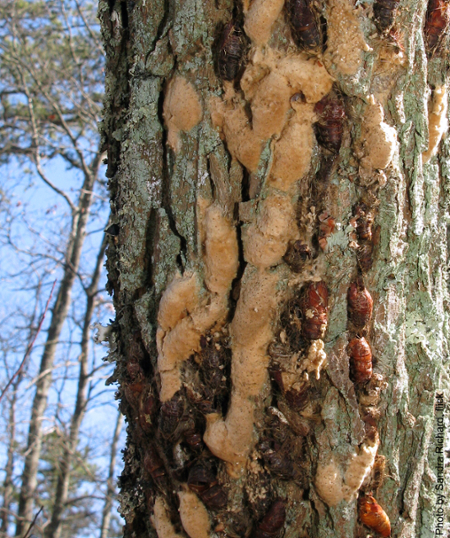
Egg masses
Spongy moth egg masses are rusty to pale brown, roughly oval-shaped, and covered in hairs.
A single egg mass contains anywhere from 500 to 1,000 eggs. Moths will lay them just about anywhere including house siding, tires, and firewood. When moving to a new area or traveling long distances, check over anything you’ve kept outside for egg masses. If you find any, gently scrape them off and put them in soapy water or rubbing alcohol to kill them.
Tent caterpillar eggs are sometimes confused with spongy moth eggs. Tent caterpillars lay eggs that are also brown and roughly oval-shaped. However, tent caterpillar eggs are smooth, slightly bumpy, or feel like Styrofoam whereas spongy moth eggs are furry and spongy.
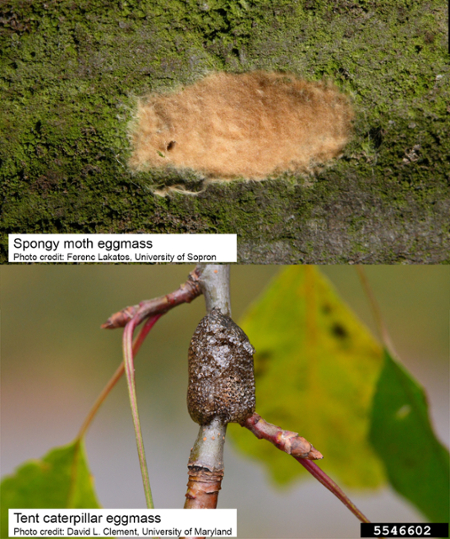
Report Sightings of Spongy Moth
Great Lakes EDN app on Apple or Android app stores
Email: DEPP@dnr.in.gov
1-866 NO EXOTIC (1-866-663-9684)

